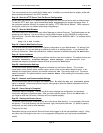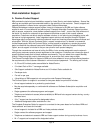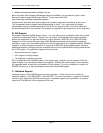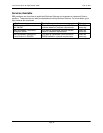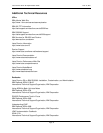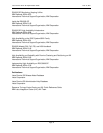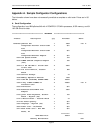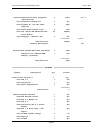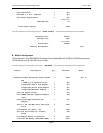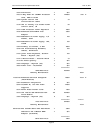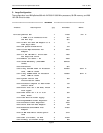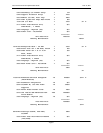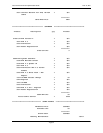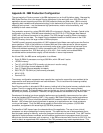
Appendix B. IBM Production Configuration
The vast majority of Domino servers in the IBM deployment run on the AIX platform today. Managed by
IBM Global Services, this is the largest Domino deployment in the world with over 1900 R5 mail and
application servers supporting more than 300,000 production Notes and Web users. IBM is currently
upgrading both hardware and software technology in this testimonial to Domino for AIX in a very large
enterprise environment -- one that demands high performance, mission-critical availability, and
scalability for both users and data.
One production scenario is a mixed RS/6000 M80-SP environment in Boulder, Colorado. Central to the
configuration is an 8-way 7026-M80 server attached to an ESS F20 (3.2 TB) Storage Area Network
(SAN), with an Ethernet connection to the network. The ESS storage is used for Domino transaction
logging, as well as user data. The largest Domino database housed on the M80 server is the 2 GB
Domino Directory due to the large number of IBM employees.
The M80 currently supports a population of 5,200 registered Lotus Notes users split across two Domino
server partitions. Each of the partitions is clustered with two Silver node servers for failover support.
Approximately one third of the users are concurrently active at any given time during business hours.
Prime shift workload represents 5.3 million transactions with 75% CPU utilization and consistently
sub-second response time. ESS disk activity is 40 to 45%. Such results have enabled IBM to
consolidate servers and achieve roughly a 5-fold reduction in server requirements.
As of June 2001, the M80 server configuration is as follows:
Ÿ Eight (8) RS64 III processors running at 500 MHz, with 4 GB level 2 cache
Ÿ 16 GB of memory
Ÿ Ten (10) 18.2 GB Ultra SCSI (currently only two are in use for rootvg)
Ÿ Two (2) 32-bit fibre channel adapters to SAN
Ÿ One (1) Gigabit Ethernet adapters to network
Ÿ ESS F20 (3.2 TB) SAN (only half currently allocated)
Ÿ AIX 4.3.3.50
Ÿ Domino 5.0.6
The memory configuration represents more capacity than required to support the user workload at the
response time and resource utilization we have witnessed. This is true even with clustering enabled,
which requires non-trivial overhead.
Each Domino partition is allocated 4 GB of memory, totaling half of the physical memory available to the
system. There is no paging taking place on the server and no evidence of any memory-related
bottlenecks or issues. The implementation does not include any form of processor binding, so there is no
set affinity for process to processor. Therefore, all eight processors are available to any Domino task.
Development lab testing has shown potential performance and scalability improvements of an option
known as Hardware MultiThreading (HMT). Very recently, IBM Global Services installed maintenance
level 8 (APAR IY10778) and microcode update MM1032 needed to enable HMT on the M80 server in
Boulder. HMT allows each physical processor to appear to an application as two virtual processors
running at half speed. Thus, the M80 server appears to Domino as having sixteen (16) 250 MHz
processors, as opposed to the actual eight (8) 500 MHz processors.
The benefits of HMT depend upon the characteristics of the application. The use of more (virtual)
processors can allow overlapping of memory access. This optimizes the use of fast processors due to
less time spent waiting for memory, and more time spent on execution of commands. Thus, HMT has the
potential to double processor workload, and still achieve a performance improvement due to the more
efficient use of slower resources such as memory. In the IBM environment with Domino for AIX 5.0.6, the
result to date is an approximate 20% reduction in the 75% processor busy metric reported above. This
Page 53
Lotus Domino Server R5 Implementation Guide June 18, 2001



